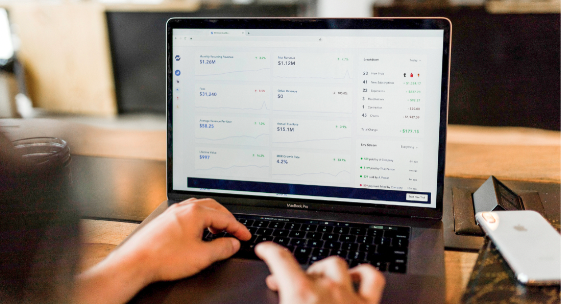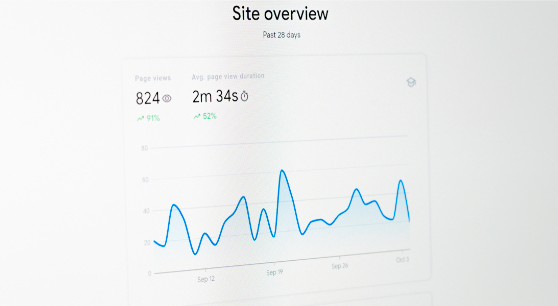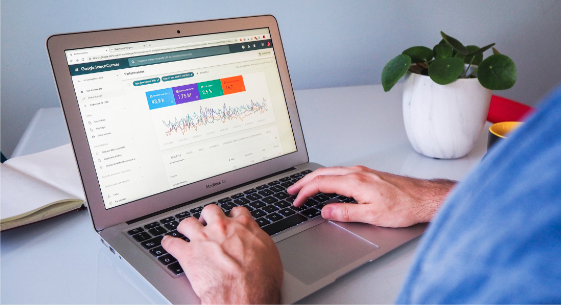Smart Bidding With Google Ads
We see it everywhere. Smart cars, smart homes, smart watches, and even Smart Bidding in Google Ads. With so many things in our lives getting an upgrade to be more efficient and effective, it was only a matter of time before our paid search campaigns received a similar treatment.
From enhanced CPC to Target CPA, Smart Bidding is changing the landscape of paid search. But what exactly is it? And more importantly, how can you get started with Smart Bidding in your Google Ads campaigns?
All will be revealed in this blog post. Read on to learn everything you need to know about Smart Bidding in Google Ads!
One way to do this is using Google Performance Max (PMax). PMax is a Google Ads tool that optimizes your campaigns to help you get the most out of your budget. This post will give you a crash course in everything PMax, from how it works to who should use it and why.
Get Started with Smart Bidding in Google Ads
What is Smart Bidding?
In the simplest of terms, Smart Bidding is a set of machine learning algorithms that use data from your Google Ads account to optimize your bids for conversions or conversion value automatically. It takes the guesswork out of bidding by using historical data and real-time signals, like location and time of day, to make bid adjustments that will help you reach your desired goals.
For example, let’s say you’re a travel agency that wants to increase bookings for a trip to Greece. With Smart Bidding, your Google Ads account will use data from past campaigns, combined with real-time signals like current search trends and user location, to automatically adjust your bids to get more clicks (and hopefully bookings) from users who are most likely to convert.
Types of Smart Bidding
- Maximize Conversions:
In this strategy, your bids are focused on the conversion actions you set up for a user. This makes it more likely that users will take the desired action on your site. This could be anything from purchasing to subscribing to your email list. Bear in mind that this option will try to get as many conversions as possible, meaning it will use your entire budget.
- Maximize Conversions w/ TCPA (target cost-per-conversion):
This is similar to the Maximize Conversions strategy, aiming to get as many conversions as possible. The main difference is that you set a target cost-per-acquisition (CPA), the average amount you are willing to pay for a conversion. This option is great for businesses with a limited budget who want to ensure they get the most bang for their buck.
- Maximize Conversion Value:
With this strategy, the Google Ads algorithm will try to get as much conversion value as possible. In other words, it will aim to get the conversions that are worth the most to your business. This is determined by considering factors such as your product prices, shipping costs, and taxes.
- Maximize Conversion Value w/ Target ROAS (return-on-ad spend):
Again, this is similar to the Maximize Conversion Value option, but with a focus on ROAS instead. With this strategy, you set a target return-on-ad spend (ROAS), the average amount of revenue you want to see for every dollar spent on ads. The Google Ads algorithm will then optimize your bids to try and reach that target.
Who Uses Smart Bidding?
Smart Bidding is available to all advertisers, but it’s important to note that it may not be suitable for everyone. If you’re new to Google Ads or don’t have a lot of data to work with, you might want to stick with manual bidding for now.
That being said, Smart Bidding can be an excellent option for businesses with a large enough data set to work with and looking for a way to automate their bidding process. It can also be helpful if you’re trying to reach a specific goal, such as reducing cost-per-conversion or increasing ROAS.
Whatever your situation, it’s always a good idea to test different bidding strategies to see what works best for your business. To help you make the most informed decision possible, we’ve put together a list of the pros and cons of Smart Bidding. Check it out below!

Smart Bidding Pros
- Auction-time Bidding:
Auction-time bidding lets you focus on your business goals and leave the bidding to Google. Smart Bidding in Google Ads analyzes various signals in real-time—such as user location, language, the device they’re using, and past conversion data—to automatically place bids designed to help you reach your desired outcomes.
- Advanced machine learning:
We hear about “machine learning” a lot, but what does it mean? In short, machine learning is a type of artificial intelligence that allows computers to learn and improve from experience without being explicitly programmed. For example, in the context of Google Ads, our algorithms are constantly getting better at predicting how likely a user will take the desired action on your site.
- Save time:
Time. It’s the one thing we can never get more of. And when it comes to managing a Google Ads account, there never seems to be enough of it. Smart Bidding can help save you time by automating the bidding process and freeing up your schedule so that you can focus on other aspects of your business. We, humans, are fast when we put our minds to something, but we’re no match for Google’s algorithms, which can analyze data and make bid adjustments in a fraction of a second.
- A world of data:
One of the most significant advantages of using Google Ads is that you can access vast data. And with Smart Bidding, this data can be used to your advantage. Google’s algorithms are constantly collecting and analyzing data signals—such as user location, time of day, past conversion data, and more—to help inform your bids and improve your campaign performance.
- Query-level performance modeling:
Query-level performance modeling is a data-driven approach that analyzes past search queries to predict how likely a user will take a desired action on your site. This information is then used to inform your bids and help you reach your desired outcomes. You can think of it as a more granular form of data-driven decision-making.
Smart Bidding Cons
- Loss of Control:
One of the most significant potential downsides of smart Bidding is that it can feel like you’re giving up a certain degree of control. When you hand over the reins to Google, there’s always a chance that things might not go exactly as planned. However, it’s important to remember that you’re not entirely powerless. You can still set goals and make adjustments to your campaigns as needed.
- Hesitation to Try New Things:
Change can be tricky, even with something seemingly innocuous as a bidding strategy. We get comfortable with the status quo, even if it’s not working as well as we’d like. But if you want your business to grow, you need to be open to trying new things. Who knows? Smart Bidding might be the key to unlocking your company’s full potential.
- Do you want to set it and forget it?:
If you’re the type of person who likes to be in the driver’s seat, Smart Bidding might not be for you. This strategy is designed for advertisers looking to take a hands-off approach. But it doesn’t mean you can’t still keep an eye on things. You’ll want to monitor your campaigns closely, even if you’re not making manual bid adjustments.
- Hesitation to spend:
One of the biggest misconceptions about Smart Bidding is that it will cause you to spend more money. While it’s true that you might see an increase in your ad spending when you first switch to a smart bidding strategy, this is usually just a temporary blip. In the long run, your costs will likely decrease as your campaigns become more efficient.

How To Get Started with Smart Bidding
If automation is key to unlocking a plethora of unique benefits, and Google Ads is the world’s most popular PPC platform, then it makes sense that you would want to use Google Ads’ Smart Bidding feature – right? After all, who wouldn’t want better results with less work?
To get started with Google Ads Smart Bidding, follow the steps below.
You’ll start by creating a new campaign in your account and choosing a goal for your crusade. After you’ve created your Search campaign, you’ll select who to target with your ads, how much money you want to spend, and how to make your campaign better with extensions.
Your ad budget sets how many people will see your ad, and targeting helps you choose who those individuals are. Bidding then allows you to specify what actions you want viewers to take. You can’t have a successful campaign without all three pieces working together.
Now that you have an understanding of the basics, let’s move on to setting up your first Smart Bidding strategy:
- Step 1: Set your daily budget. This is the average you want to spend each day.
- Step 2: In the “Bidding” section, select your desired metric from the dropdown menu. The options are Conversions or Conversion value.
- Step 3: Remember earlier when we outlined the four types of Smart Bidding? Now is the time to select your strategy. Go ahead and click on the one you want to use. Scroll up to review the strategy if you need a refresher.
- Step 4: Select Settings and then Show more settings to reveal additional options:
- Conversions: Select the sort of conversion you wish to compete for.
- Ad schedule: Set a day and time for your ads to run, rather than just picking any old day.
- Ad rotation: To maximize your ad revenue, you must choose which type of advertisements to show the most of: Those that perform better more often, or all ads evenly.
- Step 5: Click Save and continue.

Smart Bidding in Google Ads: A Tried and Tested Method
Voila! You’ve now set up a Smart Bidding campaign in Google Ads. All that’s left to do is wait for conversions (sales, leads, etc.) to roll in.
But before you sit back and relax, there are a few more things we need to cover. We have a tried and tested method for making the most of Smart Bidding, and we’re sharing it with you now.
First, a disclaimer: The following tips are based on our experience and what has worked well for us in the past. Your mileage may vary. Second, these tips are not an exhaustive list – they’re meant to be a starting point. As with anything related to PPC, experimentation is key. The only way to know what works best for your business is to test different methods and see what gets you the best results.
Now, without further ado, here are our top tips for getting the most out of Smart Bidding.
Start with Manual Bidding
If you’re new to Smart Bidding, we recommend starting with manual Bidding. This will give you a better understanding of how the process works and allow you to see how it affects your campaign performance.
Begin optimizing the campaign yourself and only hand over the reins to Google once you’re comfortable with how things work. You can review your campaign data and make bid adjustments based on how your bid is performing. Also, it never hurts to examine your keywords. Adding negative keywords can help you weed out irrelevant traffic and save money, while adding new relevant keywords can help you reach a wider audience.
Move on to Maximize Clicks
Once you’re comfortable with manual bidding, you can move on to the Maximize Clicks bidding strategy. This is a good option if your primary goal is to generate as much traffic as possible. However, remember that this strategy will consume more of your budget. Still, this initial step will allow you to start feeding data to Google so it can begin collecting historical conversion data.
Moving to maximize clicks will also open you up to new campaign types— like Google Performance Max and Discovery. Unfortunately, they cannot function within the scope of manual Bidding, so this is a necessary step if you want to explore these options.
As soon as you find your campaign generating good traffic with a healthy ROI, you can move on to the next phase—testing Smart Bidding strategies. As with anything, start experimenting with Smart Bidding slowly. Test one strategy at a time on a portion of your traffic to see how it impacts your campaign before making a decision.
We recommend assigning 50% of your budget to your manual campaign, and 50% to your Smart Bidding campaign. This allows you to scientifically test how Smart Bidding affects your movement without fully committing to the new strategy. Then, if it performs well, you can increase your budget accordingly. If not, you can lower it or pull the plug entirely without jeopardizing your entire campaign.
Congrats! You’re now on your way to success with Smart Bidding in Google Ads. Remember to start slow, test different strategies, and observe your results. With a little effort, you’ll be an expert in no time.
Tips and Best Practices for Google Ads Smart Bidding
A few things to keep in mind when using Smart Bidding will help you get the most out of the process.
First, set clear goals for your campaign. What do you want? More traffic? Better ROI? Once you know what you want, you can select the right bidding strategy.
Second, don’t forget to bid on the right keywords. This seems like a no-brainer, but getting caught up in the bidding process and forgetting about the keywords that started it all is easy. Make sure they’re still relevant, and you’re not overspending on irrelevant traffic.
Third, keep an eye on your Quality Score. A good Quality Score will help you get more bang for your buck, so it’s essential to keep track of how yours is doing. Not only that, but a high Quality Score means Google trusts you, leading to lower CPCs and better ad positions.
Finally, don’t be afraid to adjust your bids. Setting a bid doesn’t mean you’re stuck with it forever. Make a change if your CPCs are too high or your ad position is slipping. The same goes for your budget— if you need to, adjust it accordingly.
The Conclusion
Smart Bidding is a powerful tool, but like all things, it takes some time to master. You must put your best foot forward by setting clear goals, bidding on relevant keywords, and monitoring your progress along the way. With a little effort, you’ll be an expert in no time.
Still have questions? Adcore’s team of Google Ads experts would be happy to help. We thrive on complex challenges and have a proven track record of success.
Adcore provides various solutions for outstanding digital marketing through our vision of ‘Effortless Marketing.’ We take a data-driven approach to marketing and use the latest technology to deliver the results that matter.
PPC Marketing Expert?
Get things done with Adcore Marketing Cloud.
5 essential PPC tools under one roof.
Related Articles